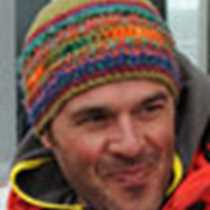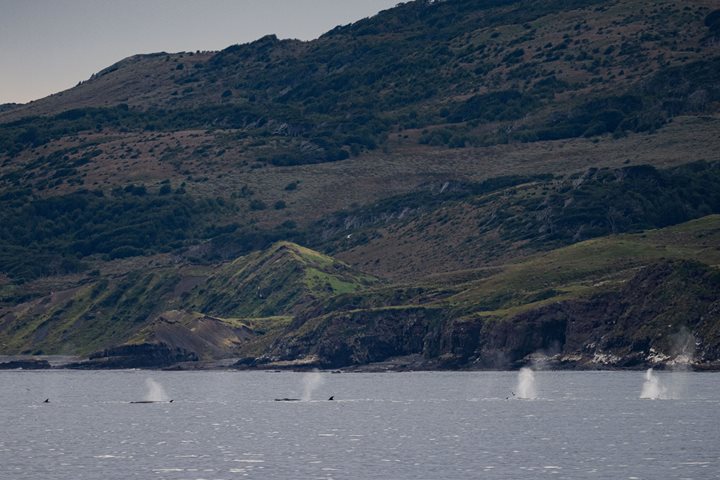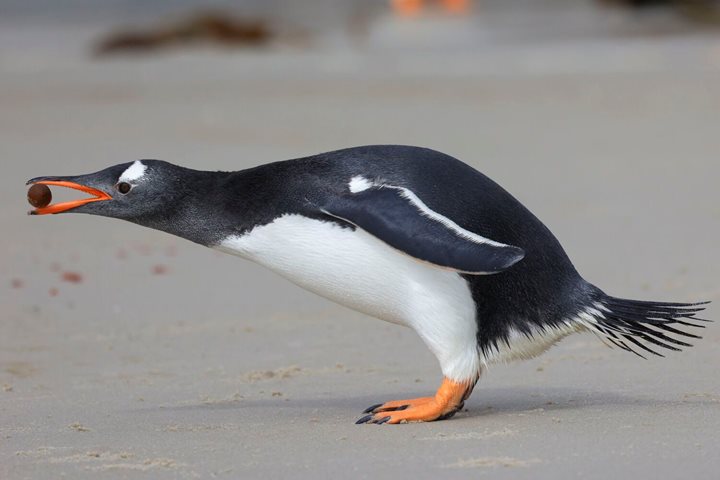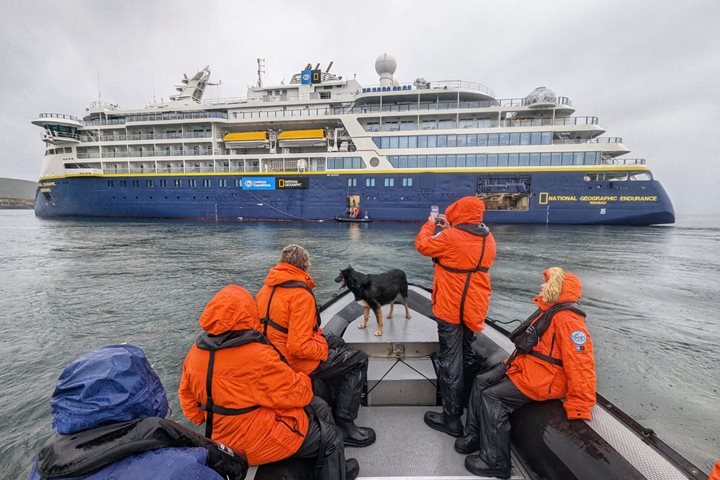The shake finally came to us overnight. Beaufort scale 8 and winds up to 55 knots on the nose of National Geographic Explorer made for a rather bumpy night and some of us did not get the most pleasant of the sleeps…By now we are over ¾ of the expedition and it is the first bit of real Southern Ocean that we’ve experienced. Some of you asked for it, so there you go!
Outside the ship, the skies and the ocean both look very gray and bleak while the constant crashing waves completely washed the bow and occasionally the windows of the bridge, sometimes mixed with strong squalls passing by. Most of the great albatross and petrels reacted wisely to the conditions and flew away, riding ahead of the storm and were nowhere to be seen during the day. Only a few individuals of the smaller petrels like the cigar-shaped Soft-plumaged and the slender-bodied White-chinned, showed up occasionally and briefly, battling the massive waves and the furious fifties with incredible ability. It is quite unbelievable, for us land-based creatures, that these birds are actually at ease in these rough conditions and that this is the area where they thrive and reproduce. But millions of years of evolution have come up with the perfect flying machines that today fly by our ship in the roughest oceans we have yet encountered.
Inside the comfortable Explorer, it was another day for education and introductions to what awaits us in the Falklands Islands starting tomorrow. With the help of presentations and documentaries we covered topics as wide as the Falkland War and the Argentinean perspective of the story; some of the major threats that seabirds are going through; and great stories about dogs, men and exploration in Antarctica and the Arctic.







